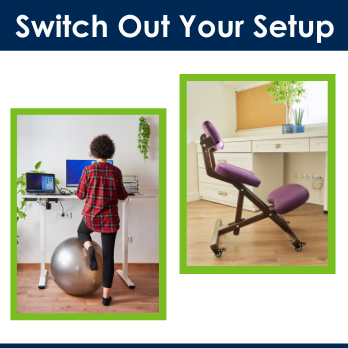If you’re one of the 80% of Americans working a desk job, keep reading.
You may imagine an article about office workers written by an exercise physiologist would focus on getting you to sit up straight and improve your posture. If so, you’d be wrong as I've got some more practical tips than that!
Instead of only paying attention to “good posture,” physical therapists recommend focusing more on consistent, intermittent movement, coupled with changes in posture. A catchy phrase to remember this approach is “the next posture is the best posture” indicating that consistent movement is the best way to avoid pain associated with sitting for long periods of time. Why? Because humans did not evolve to stay in static positions for long stretches of time.
When we limit our movement -as we desk workers often do- we are prone to experience negative repercussions such as an increased likelihood of developing muscle tension, joint dysfunction, and a decrease in blood flow. All those hundreds of articles defining good posture and demanding we “sit up straight”, really aren’t helping.
Now that you know you should make a habit of regular movement, you might have some follow-up questions like just how often should we move? According to the Mayo Clinic, we should be moving every 30 minutes during long durations of sitting. If you need some ideas on how to shake things up to avoid the aches and pains of long periods of desk work, I’ve outlined a few tips below.
- If possible, take phone calls standing up or walking around.
- After eating lunch, take a little stroll; if possible, take your walk outside to get fresh air.
- Replace your desk with an adjustable feature to allow periods of sitting as well as standing customized to your height.
- Relax your jaw and shoulders.
- Uncross your legs to promote better circulation.
- Try a different kind of seat like a yoga ball or a kneeling chair (examples included below).
- Set a timer on your phone or watch for 30-minute intervals to remind yourself to stand, walk or stretch throughout the day; to prevent any interruption to work be sure to set that reminder to vibrate. 😉
- Try some chair yoga poses periodically through the day to stretch your muscles, especially prioritizing muscles that get tight in a traditional seated position such as hip flexors, low back, hamstrings, and traps/neck and shoulders. Please see below for options for stretches that can be done from a chair. If pressed for time, try the underlined stretches to prioritize the muscle groups I mentioned above. Each stretch should be held for 30-60 seconds.






